Number killed in historic Europe flooding rises to 160 amid fears German dam remains at risk of collapse
At least 160 people are now confirmed to have died after "historic" flooding across Germany and Belgium, with fears the number will rise further as rescuers search for hundreds still missing.
Amid scenes of despair in both countries, emergency workers are toiling away to find survivors, clear up debris, and prevent further damage.
But there remain concerns that more devastation could be forthcoming, with dykes along one river from Belgium to the Netherlands and a dam in Germany's North Rhine-Westphalia said to be at risk of collapse.
The worst affected regions include some of the most prosperous in Europe, with astonishing footage from near Frankfurt showing an entire house being carried down the River Ahr.
House swept along river in Germany floodsElsewhere, cars were upended, power networks went down and buildings collapsed as floodwaters rushed through villages such as Schuld, south of Bonn, in western Germany.
Advertisement
Thousands of people have been left homeless.
The vast majority of those killed were in Germany, where 133 people have died.
More on BelgiumPolice said that more than 90 people are now known to have died in western Germany's Ahrweiler county, one of the worst-hit areas, and more casualties are feared.
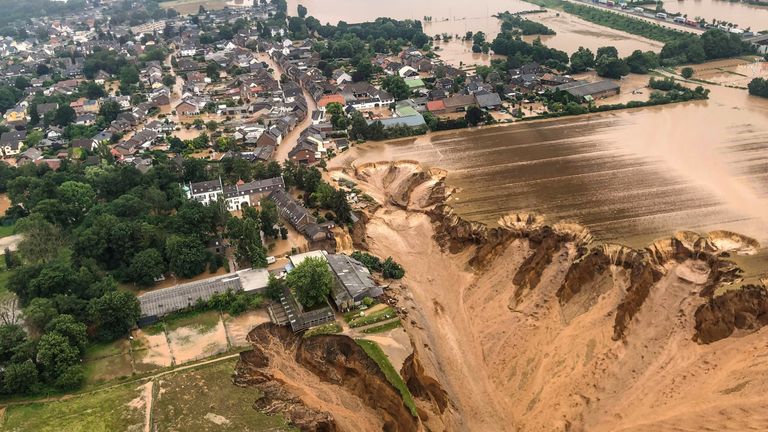 Image: The town of Erftstadt from above
Image: The town of Erftstadt from above 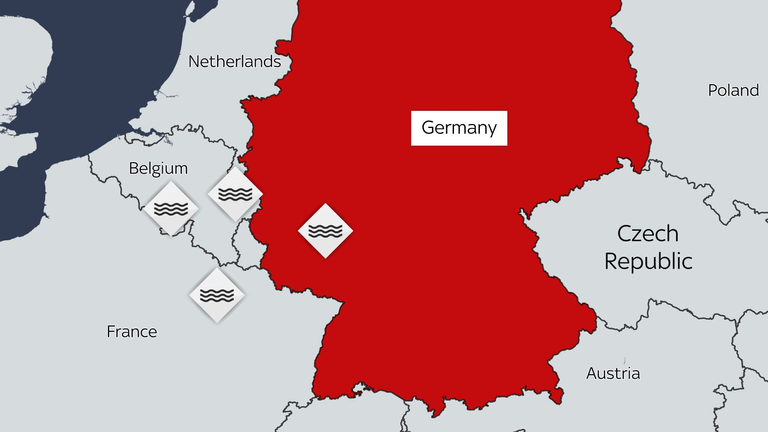 Image: The floods have affected large areas of western Europe Major rescue effort as deadly floods hit Europe
Image: The floods have affected large areas of western Europe Major rescue effort as deadly floods hit Europe Another 43 people were confirmed dead in neighbouring North Rhine-Westphalia state, Germany's most populous, and 27 others have died across the border in Belgium.
State premier Armin Laschet said the flooding was a "catastrophe of historic dimensions", while German President Frank-Walter Steinmeier said he was "stunned" by the disaster.
"The floods have literally pulled the ground from beneath many people's feet. They lost their houses, farms or businesses," Mr Laschet told reporters.
In Erftstadt, southwest of Cologne, 50 people were rescued after the ground beneath their homes collapsed, official Frank Rock told local broadcasters.
Aerial pictures showed a massive landslide at a gravel pit on the edge of the town.
"One has to assume that under the circumstances some people didn't manage to escape," said Mr Rock.
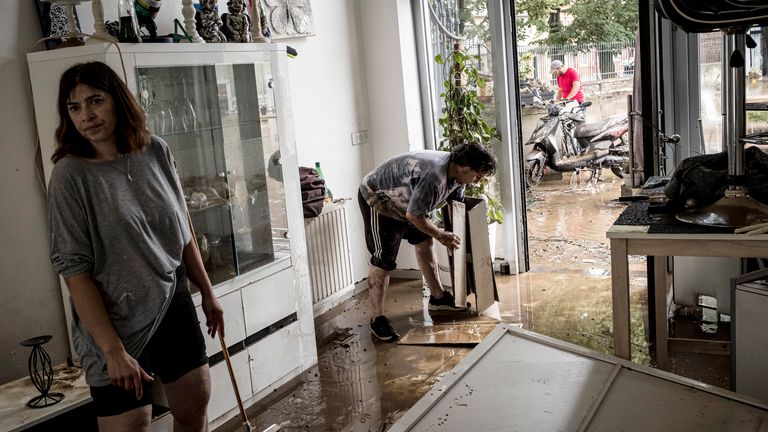 Image: People clean their home in Liege, Belgium. Pic: Associated Press
Image: People clean their home in Liege, Belgium. Pic: Associated Press 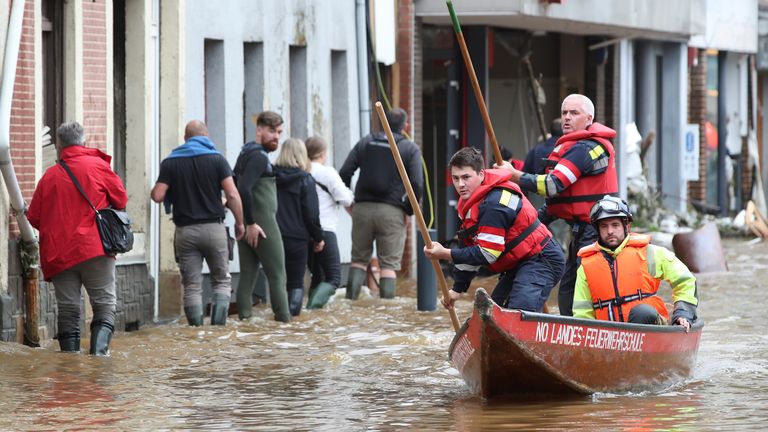 Image: Rescue teams from Austria have arrived in Belgium to help search for survivors
Image: Rescue teams from Austria have arrived in Belgium to help search for survivors Sky News visited one area of North Rhine-Westphalia where police are patrolling to ensure people have evacuated amid fears a nearby dam could collapse and consume hundreds of houses.
In Belgium, 27 deaths have been confirmed and interior minister Annelies Verlinden said another 20 people were missing on Friday as the country declared a day of mourning.
Dykes on the River Meuse that runs from Belgium into the Netherlands were also at risk of collapsing, Mr Verlinden added.
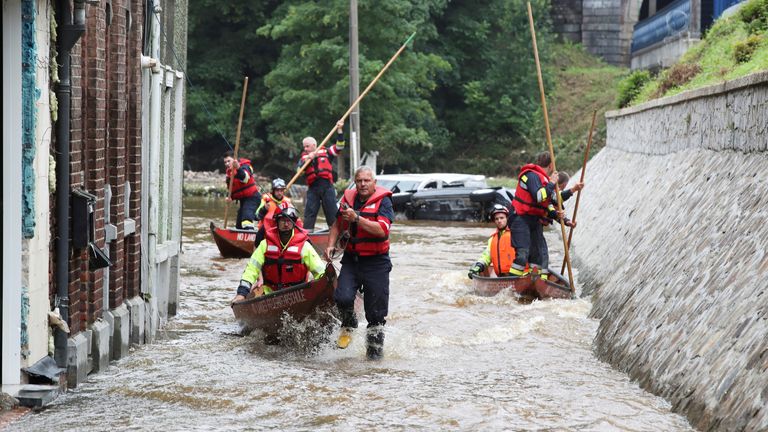 Image: Pepinster in Belgium is one of the hardest hit areas
Image: Pepinster in Belgium is one of the hardest hit areas 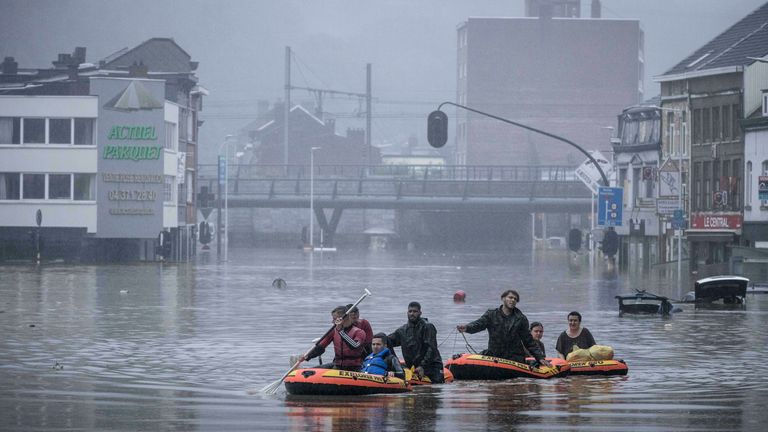 Image: People used rubber rafts in floodwaters on the Meuse River in Liege, Belgium
Image: People used rubber rafts in floodwaters on the Meuse River in Liege, Belgium Some 200 patients were evacuated from a hospital in the Dutch town of Venlo as a precaution.
Naomi Nolte, from the Netherlands Red Cross, told Sky News from Venlo that the organisation had to evacuate its offices due to the flooding.
She said: "I'm also at a Red Cross location that is different from where our coordination centre for all of these Red Cross activities were before.
"So even we've had to evacuate to a different location, because water is rising and we want to make sure that none of us are affected by the flooding and can continue to provide assistance."
Ms Nolte also explained how an entire hospital was evacuated in case a nearby river flooded.
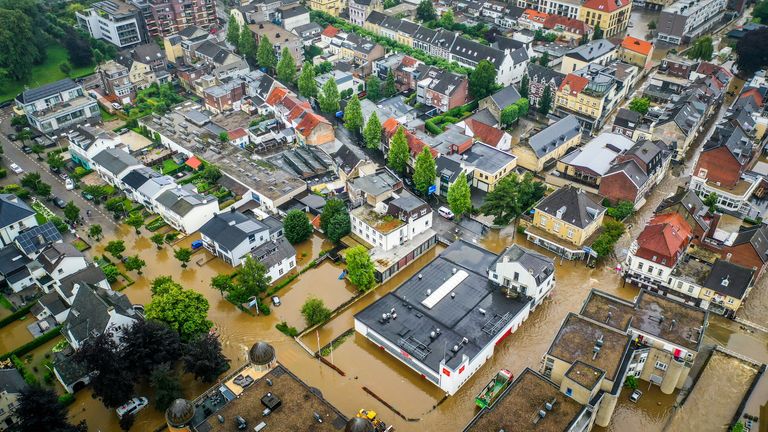 Image: The town of Valkenburg in the Netherlands
Image: The town of Valkenburg in the Netherlands 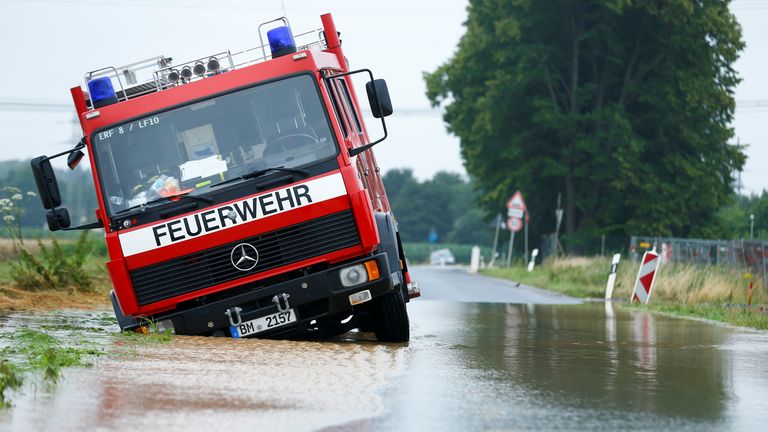 Image: Even emergency services were stranded
Image: Even emergency services were stranded "Thankfully, it did not [flood], and all of those patients have been relocated to different hospitals all over the country, and now we're keeping a close eye to monitor whether that river is actually going to overflow or not."
She said that, because the Netherlands is below sea level, it is used to "dealing with water".
However the last big flood the country dealt with was the 1953 "Great Flood" which came from the North Sea, and not the waterways in the south of the country.
Ms Nolte added: "In this area in the south they have experienced flooding in the 80s and the 90s as well, and I've spoken to some people over the last few days that are a little bit older That said 'I was there for those floods, and they were bad, but I've never seen anything like this in my life'."
Thousands of people in the Netherlands' Limburg province were also ordered to leave early on Friday.
Dutch Prime Minister Mark Rutte declared some regions disaster areas to free up emergency funds.
Aerial video shows havoc wreaked by German landslide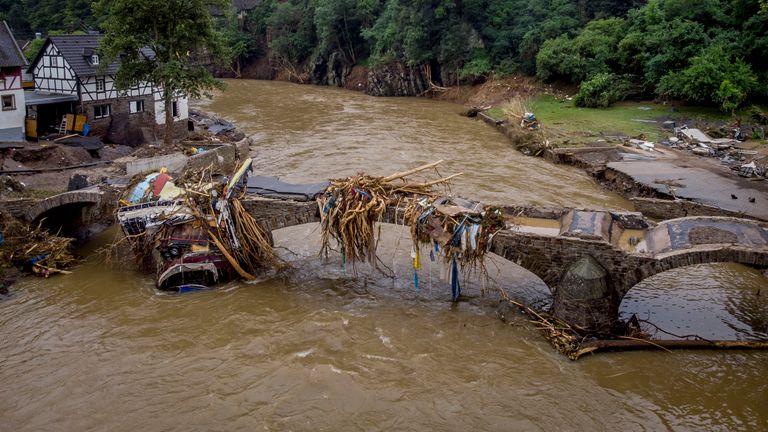 Image: A bridge covered in debris in Schuld, Germany. Pic: Associated Press
Image: A bridge covered in debris in Schuld, Germany. Pic: Associated Press Meteorologists said some areas of western Europe had received two months' rain in two days ahead of the floods, with more than 150 litres per square metre falling over 24 hours in parts of western Germany.
Several senior officials have blamed climate change for the disaster.
"Climate change isn't abstract anymore. We are experiencing it up close and painfully," said Malu Dreyer, governor of Rhineland-Palatinate state.
She said it showed the need to speed up action on the issue.
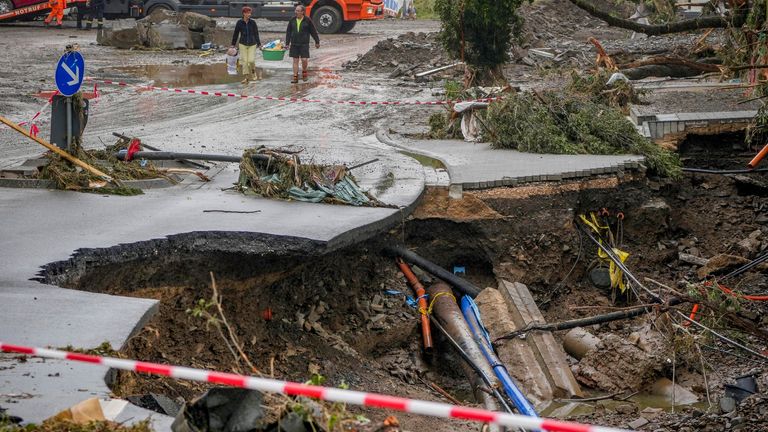 Image: The scene in Schuld, one of the worst-affected villages. Pic: Associated Press
Image: The scene in Schuld, one of the worst-affected villages. Pic: Associated Press  Image: Trees and other detritus were left between houses in Schuld. Pic: Associated Press
Image: Trees and other detritus were left between houses in Schuld. Pic: Associated Press German President Frank-Walter Steinmeier also said it showed that decisive action was the only way "to limit the extreme weather conditions we are now experiencing".
Chancellor Angela Merkel has been in the US but is reportedly set to visit Schuld - one of the worst affected villages - on Sunday.
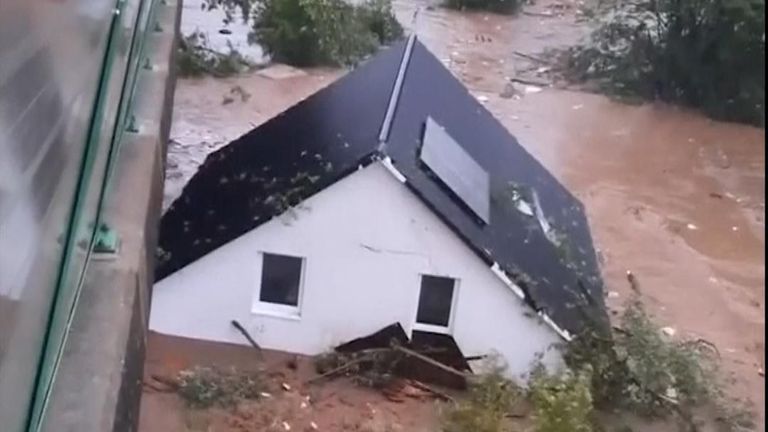 House swept along river in Germany floods
House swept along river in Germany floods  Major rescue effort as deadly floods hit Europe
Major rescue effort as deadly floods hit Europe 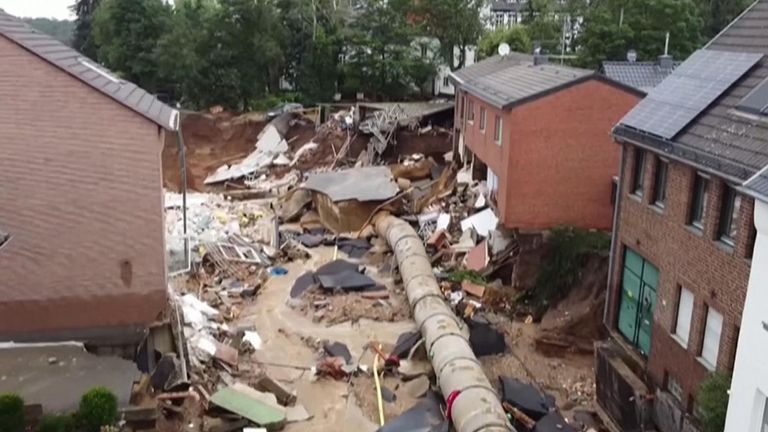 Aerial video shows havoc wreaked by German landslide
Aerial video shows havoc wreaked by German landslide
0 Response to "Number killed in historic Europe flooding rises to 160 amid fears German dam remains at risk of collapse"
Post a Comment